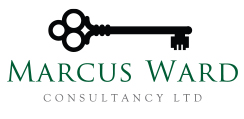Further to the background to Freeports here I consider the latest developments.
What are Freeports?
Freeports are a specific port where normal tax and customs rules do not apply. Imports can enter with simplified customs documentation and without paying tariffs. Businesses operating inside designated areas in and around the port can manufacture goods using the imports, before exporting again without paying the tariff on the original imported goods (however, a tariff may be payable on the finished product when it reaches its final destination).
Freeports are similar to Free zones, or “Enterprise Zones”
which are designated areas subject to a broad array of special regulatory
requirements, tax breaks and Government support. The difference is that a Freeport
is designed to specifically encourage businesses that import, process and then
re-export goods, rather than more general business support.
Use
Goods brought into a Freeport are not subject to duties until they leave the port and enter the UK market. Additionally, if the goods are re-exported no duty is payable at all.
If raw materials are brought into a Freeport and processed
into final goods before entering the UK market, duties will be paid on the
final goods.
Background
If a business chooses to use a Freeport to import
or export goods, it will be able to:
- get relief from duties and import taxes
- use simplified declarations processes to reduce administrative burdens
- choose which rate of Customs Duty to use if processing the goods changes
their classification
If goods are purchased in the UK, a business will
continue to pay duties and import taxes using the normal UK rates.
Where are they?
The eight new Freeports are located at East Midlands Airport,
Felixstowe and Harwich, the Humber region, Liverpool City Region, Plymouth, the
Solent, the Thames, and Teesside.
Authorisation needed to use a Freeport
A business can apply to use the Freeport customs special procedure (a
single authorisation combined with easier declaration requirements) to import
goods for:
- processing and then export or for sale in the UK
- storage and then export or for sale in the UK
Declaring goods entering the UK Freeport
A form C21
is used to declare goods entering the UK. This can be done before the goods
arrive in the UK or when the goods have arrived in the UK.
Declaring goods exported
A business will normally need to submit an exit summary
declaration when goods are exported from the UK. When an exit summary
declaration is not needed, a business will need to give an onward export
notification to HMRC.
Disposing of goods which have been processed or repaired
When a business has finished
processing or repairing goods, it must leave the Freeport and dispose of the
goods by either:
- re-exporting them outside the UK
- declaring them to another customs procedure
- transferring them to another Freeport Business Authorisation holder
- destroying them – usually only possible under customs supervision
- using other simplified disposal methods
VAT on supplies in the Freeport
A business will be able to zero rate supplies within a
Freeport of:
- goods
declared to the Freeport
- services
carried out on goods declared to the Freeport
When a zero rated VAT invoice is issued, it must include the
reference “Free zone”.
Zero rating of goods applies if:
- they
are declared to the Freeport
- they
are sold from one authorised Freeport business to another in the Freeport
- both
Freeport businesses are registered for VAT (unless they are exempt from
registering for VAT and HMRC has approved this exemption)
Benefits
The Government says that Freeports and free zones are
intended to stimulate economic activity in their designated areas. Government
backed economic studies have found the main advantage of Freeports is that
they encourage imports by lowering duty and paperwork costs. Manufacturing
businesses that are inside the Freeport can benefit from cheaper imported
inputs in comparison to those outside the area. However, some commentators such
as the UK Trade Policy
Observatory (UKTPO) suggest that whilst some form of free zones could help with
shaping export-oriented and place-based regional development programmes, it is
important to ensure that trade is not simply diverted from elsewhere and that wider
incentives are needed.
Evasion
Considering that the European
Parliament has called for Freeports to be scrapped across the EU because
of tax evasion and money laundering and that they are where trade can be
conducted untaxed, and ownership can be concealed it is likely that there will
be a certain degree of evasion. This a result of the lack of scrutiny on
imports and means that high-value items, eg; art, can be bought and easily
stored in Freeports without the kind of checks and controls they would normally
face.
Summary
Any business that regularly imports
and/or exports goods should consider if a Freeport will benefit their business
model. This is particularly relevant if work is carried out on imported goods.
